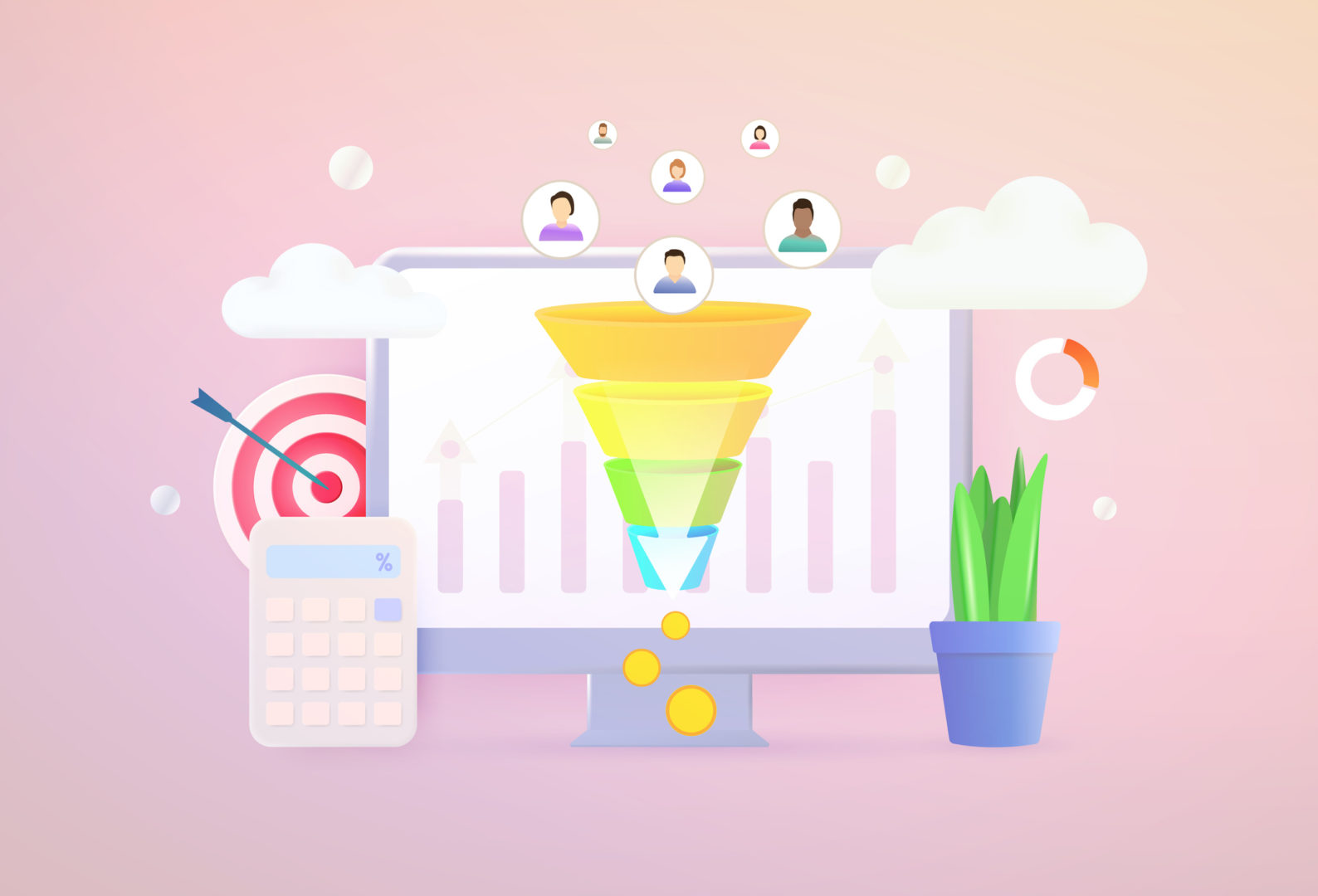Inbound Marketing is seen as a methodology used to attract, create connections and solve problems for customers and potential consumers based on the creation of relevant content and personalized experiences across a wide range of channels: social media, emails, blogs and others.
Inbound Marketing strategies assist customers throughout their purchasing journey, guiding them through the stages of the sales funnel:
Top of the funnel (Learning and discovery)
Top of the funnel is the stage where the user acknowledges they have a problem but doesn’t yet know how to solve it. For this reason, they seek out information that can assist them in this mission.
The user searches the internet for the best solution to their problem and the brand that offers relevant, attractive and informative content about this will gain the reader’s attention.
Amid this stage of learning and discovery, Inbound Marketing aims to educate customers and point out how their problems can be solved.
This can happen, mainly, with the creation of articles for blogs, showing how this need arises and how it can be met with the help of specific products and services.
The more content your business offers, the greater the chances that the visitor will proceed to the next stages of the funnel.
Middle of funnel (Problem recognition)
In the middle of the funnel, Inbound Marketing is practiced in another way. This is because it is the stage in which the visitor already understands that they have a problem and how it can be solved. Now is your chance to point out your product or service as the perfect solution.
The chances of closing a deal increase at this sales stage. Using a well-structured Inbound Marketing strategy, your brand shows the user that they do not need to look for a solution elsewhere, as you have everything they are looking for.
The Inbound Marketing strategy here is to capture as much information about that user as possible. This can happen through a Landing Page with a conversion form, for example.
This form must contain personal information such as name, email and telephone number so that your company can get in touch and encourage the next step: the purchasing decision.
Bottom of the funnel (Purchase decision)
The third and final stage of the sales funnel is the bottom. This is when the visitor finally makes the decision to buy a product or hire a service.
At this stage, when the customer already knows what they need to solve the problem, they have two options: purchase your solution or that of your competitors. Therefore, Inbound Marketing has the mission of encouraging purchases or hiring in your business.
The strategy for this is often to provide an attractive discount coupon or use CTAs (calls to action) to motivate the customer, such as “talk to an attendant” and “receive more offers”, for example.
The mission of Inbound Marketing is to ensure that the user does not leave your website without completing the purchase or getting in touch to complete the action later.
What are the fundamentals of Inbound Marketing?
This marketing methodology has three fundamentals: attract, convert and delight.
- Attract and create a connection with potential customers with relevant content;
- Convert an action, such as a purchase or registration for a brand event;
- Delight and provide all the support necessary for users to trust your business and return whenever they need efficient solutions.
Now that you understand what Inbound Marketing means and what its objectives are, also see what resources and practices are used in developing a strategy like this.
An Inbound Marketing strategy must have:
- Blog articles, e-books and other rich materials;
- SEO strategies to achieve good positions on Google and other search engines;
- Social media posts;
- Landing Pages;
- Email marketing;
- Newsletters.
So that your business achieves the following benefits:
- More visibility;
- Ability to attract more potential customers;
- Creating content that makes a difference for your audience;
- Optimized sales cycle;
- Good relationship with customers;
- Track results in real time.
See a success story:
TD SYNNEX and Microsoft aimed to carry out a digital campaign capable of positioning Microsoft as a player in the cybersecurity market and acquiring new customers.
The campaign needed to encompass two distinct target audiences: IT resellers (TD SYNNEX’s key partners) and businesses (Microsoft’s primary focus). Additionally, the campaign was intended to run across 9 Latin American countries, with content in both Portuguese and Spanish.
To execute this project, the campaign needed to be divided into two parts:
The first part was designed to deliver the message to TD SYNNEX’s partner resellers, informing them about Microsoft’s security offerings and encouraging technical training.
The second part was focused on social media to generate leads from businesses.
During the 6 months it was in effect, the campaign generated more than 1.2 million impressions and more than 40 thousand clicks from 9 countries in Latin America. 654 leads (potential customers) were acquired, of which 68 were ready for sale and 20 requested direct contact with a TD SYNNEX specialist.
Read all the case details: Microsoft Campaign • SYNNEX • Ideatore (ideatoreamericas.com)
And if you want to acquire more customers using Inbound Marketing strategies, get in touch!
